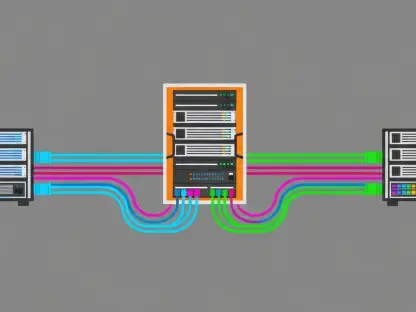In an era where technology permeates every aspect of life, cloud-based learning management platforms (LMS) have emerged as a transformative force in education, reshaping how knowledge is delivered and absorbed across diverse settings. These innovative systems, hosted on remote servers and accessible through the internet, provide a compelling alternative to traditional, locally installed software that often requires substantial on-site infrastructure. By enabling educational institutions, corporations, and training providers to create, manage, and track learning content with remarkable ease, cloud-based LMS are breaking down barriers of access and adaptability. Their rise reflects a broader shift toward digital solutions that prioritize scalability and flexibility, catering to the needs of modern learners and educators alike. As these platforms gain traction, they are redefining the educational landscape, making it more inclusive and responsive to individual schedules and environments. Understanding their potential and implications is essential for stakeholders aiming to stay ahead in a rapidly evolving digital world.
Transforming Education Through Accessibility
The hallmark of cloud-based LMS is their unparalleled accessibility, which fundamentally changes how educational content reaches users across the globe. With nothing more than an internet connection, students, educators, and corporate trainees can tap into a vast array of resources from virtually any location, whether at home, in a classroom, or on the go. This level of access supports a variety of learning scenarios, from remote education in underserved regions to flexible corporate training schedules that accommodate busy professionals. Such adaptability ensures that education is no longer confined to physical spaces or rigid timetables, fostering inclusivity for diverse populations. Moreover, this accessibility empowers institutions to reach broader audiences without the constraints of traditional infrastructure, paving the way for global learning communities that transcend geographical boundaries and time zones.
Beyond mere access, the flexibility of cloud-based LMS enhances the educational experience by accommodating individual needs and preferences in ways that traditional systems often cannot. Learners can engage with materials at their own pace, revisiting complex topics or accelerating through familiar content as needed, which promotes a sense of autonomy and personal responsibility. For educators, this means the ability to tailor instruction to varied learning styles without being tethered to a fixed location or set of tools. Institutions benefit as well, as these platforms enable rapid scaling to accommodate growing numbers of users without the prohibitive costs of physical expansion. This adaptability is particularly crucial in dynamic environments where learner demographics and needs shift frequently, ensuring that educational delivery remains relevant and effective in meeting contemporary demands.
Enhancing Learning with Innovative Features
Cloud-based LMS are equipped with a suite of features designed to enrich the learning process, making it more interactive and efficient for both educators and students. Tools for creating and organizing courses allow instructors to build comprehensive curricula with ease, while real-time progress tracking provides immediate insights into student performance, enabling timely interventions when necessary. Automated grading systems reduce administrative burdens, freeing up time for more meaningful engagement with learners, and interactive elements like quizzes and discussion forums encourage active participation. The inclusion of multimedia content, such as videos and audio resources, caters to diverse learning preferences, ensuring that visual, auditory, and kinesthetic learners all find value in the material presented, thus broadening the appeal and effectiveness of educational offerings.
The benefits of these features extend deeply into the learner experience, fostering an environment where self-directed education thrives under the right conditions. Students gain the ability to take control of their learning journey, accessing resources on demand and revisiting challenging concepts at a pace that suits their individual needs, which often leads to improved comprehension and retention. For educators, the streamlined administrative capabilities mean more focus can be placed on personalized instruction and less on repetitive tasks, enhancing the quality of teaching. Institutions also see advantages through cost efficiencies, as these platforms often operate on subscription-based models that eliminate the need for expensive hardware or ongoing maintenance, making high-quality education tools accessible to organizations regardless of budget constraints, and ensuring scalability as user bases grow.
Prioritizing Security and Seamless Integration
Security stands as a cornerstone of cloud-based LMS, addressing the critical need to protect sensitive data in an increasingly digital educational landscape. Providers of these platforms typically employ robust encryption methods and conduct frequent security audits to safeguard user information, ensuring compliance with stringent privacy standards. High uptime guarantees, supported by data backups and system redundancies, minimize disruptions to learning, maintaining continuity even during technical challenges. Dedicated support teams are often available to address issues promptly, providing reassurance to users that their educational processes will not be hindered by unforeseen glitches. This focus on reliability is vital for building trust among institutions and learners who rely on these systems for consistent access to critical resources.
Integration with other digital tools further amplifies the utility of cloud-based LMS, creating a cohesive ecosystem that supports a wide range of educational activities. Compatibility with video conferencing applications, collaboration software, and content creation tools enables seamless transitions between live lectures, group projects, and individual study, fostering a connected learning environment. This interconnectedness facilitates enhanced communication between peers and instructors, breaking down silos that often exist in traditional educational setups. Such integration not only streamlines workflows for educators but also enriches the student experience by providing a holistic platform where various aspects of learning—content delivery, interaction, and assessment—merge effortlessly, aligning with the expectations of a tech-savvy generation accustomed to integrated digital experiences.
Addressing Challenges and Future Considerations
Despite the numerous advantages, cloud-based LMS are not without challenges that must be navigated to ensure equitable access and effective implementation across diverse contexts. A significant barrier is the dependency on reliable internet connectivity, which remains a hurdle in regions with limited infrastructure, potentially excluding certain populations from benefiting fully from these platforms. This digital divide underscores the urgency of investing in broader technological access to bridge gaps and ensure that the advantages of cloud-based learning are not limited to well-connected areas. Addressing this issue requires coordinated efforts from governments, educational bodies, and technology providers to expand network coverage and provide affordable access solutions, ensuring inclusivity remains a priority in the push toward digital education.
Looking ahead, the successful adoption of cloud-based LMS also hinges on comprehensive training programs to equip users with the skills needed to maximize these tools’ potential. Educators and students alike often face a learning curve when transitioning to new technology, which can slow implementation if not addressed proactively with structured support and resources. Additionally, ongoing evaluation of these platforms’ impact on learning outcomes will be essential to refine features and address emerging needs over time. Strategic investments in infrastructure and user readiness made in the past paved the way for progress, and continuing this momentum will be crucial. As past efforts demonstrated, overcoming connectivity and training barriers through targeted initiatives enabled wider access, setting a foundation for future innovations that can further transform education into a truly global, accessible endeavor.









